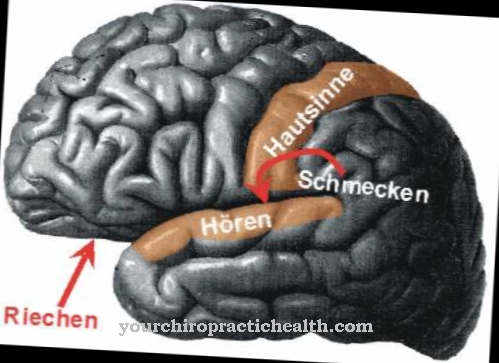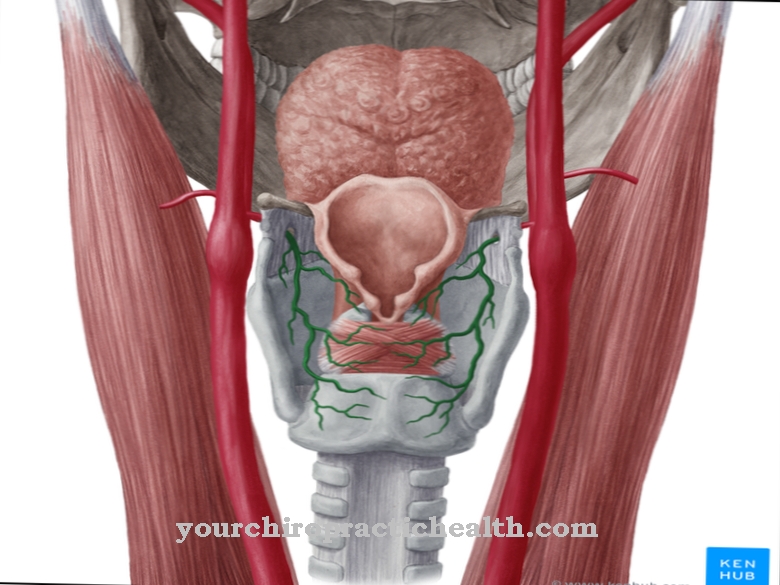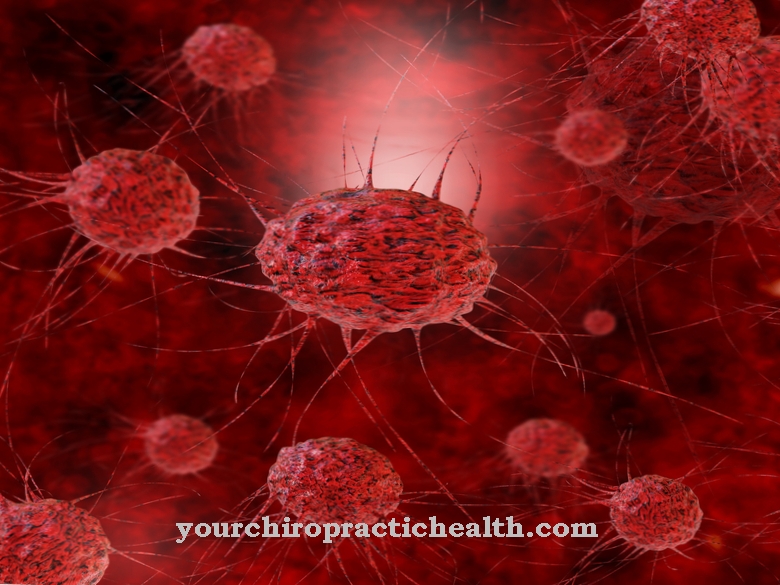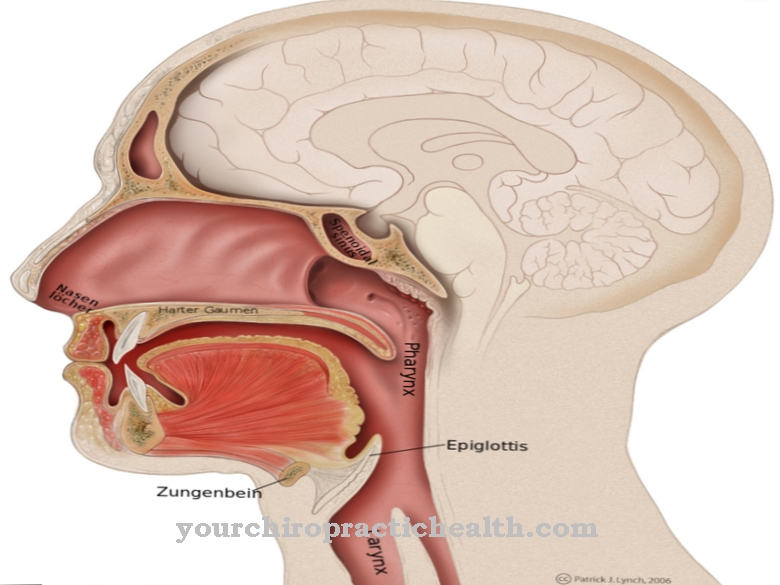The Lingual artery is responsible for the blood supply to the tongue. It winds itself strongly in a meandering manner between the lower muscles of the tongue. It becomes colloquial Tongue artery called. The lingual artery is the second main trunk in addition to the facial artery (facial artery) from the external main artery. The sublingual artery branches off on its way and ends in the floor of the oral cavity. In contrast, the lingual artery extends to the tip of the tongue. It is designed in such a way that it can carry out all movements of the tongue.
What is the lingual artery?
Because of its proximity to the heart, it is one of the elastic-type arteries. These ensure the continuous circulation of the blood. In addition to the tongue artery, these vessels also include the aorta (main artery). The middle and smaller arteries of the great circulation form the broader group of muscular arteries.
You are responsible for maintaining blood pressure. The main job of the arteries is to carry blood away from the heart. The blood flows from the large into very small arteries (arterioles), which in turn maintain a connection to the hair vessels (capillaries). With their elasticity, the arteries near the heart withstand the pressure of the heart's pumping capacity. If this pressure drops temporarily, they compensate for this by contracting. The veins that pump blood to the heart, for example, cannot do this.
Anatomy & structure
Like all other arteries and, in principle, the veins, the lingual artery consists of three layers of tissue. The inner layer is the tunica (tunica intima).
It manages the exchange of substances and gases between the blood flowing through and the vessel wall. The tunica is composed of flat cells that are stored on a basement membrane. It also consists of connective tissue, which provides the elastic properties. Muscle contractions take place in the middle layer, the media (tunica media). This adapts the respective width of the vessel to the specific conditions that are specified by the pulse rate and blood pressure.
The media is made up of smooth muscle cells and elastic fibers that are arranged in a ring shape. The adventitia (Tunis externa) then closes off the tongue artery from the outside. In its elastic composition it is similar to the media. But it also has a supply function for nerves and blood vessels. Their structure also enables them to be anchored to the surrounding vessels. The arteries can connect to the veins with the help of the capillaries. In contrast to the tongue artery, for example, a capillary is only formed by a thin layer of cells.
This so-called endothelium can separate blood and tissue from one another, but is on the other hand permeable. In this way, it ensures the best possible exchange of substances in the blood and the surrounding tissue layers. The walls of the capillaries contain a basement membrane and other stabilizing cells for support. The capillaries also establish the connection to larger veins via very small and thin venules. The veins are characterized by thinner walls than arteries. They also have a greater ability to stretch.
Function & tasks
What the arteria linguaris is capable of is illustrated by the different tasks and functions of the human tongue. This elongated muscle body, surrounded by mucous membranes, is essential for chewing, sucking, swallowing, tasting and speaking. The tongue is divided into a tip, body and root. The top is called the back of the tongue and has a triangular depression in the back, the blind hole.
There are several mucous glands there. A salivary gland can be found in the area of the tip of the tongue. The underside is connected to the palate floor by means of the tongue ribbon in such a way that only the tip of the tongue and the side edges can move freely. The root as the rearmost and thickest area of the tongue is connected to the larynx through the hyoid bone. The tongue consists mainly of innumerable muscle fibers and is an intensive network of nerves and blood vessels. That makes them so very agile.
You can find your medication here
➔ Medicines against tartar and tooth discolorationDiseases
The arterial supply of the tongue muscles is of particular importance in this regard. The inner muscles in the body of the tongue are responsible for shortening, spreading, lengthening and narrowing the tongue as well as lifting and extending the tip of the tongue.
The tongue is connected to the surrounding organ and tissue structures through the external muscles. This muscle group can, for example, cause the tongue to be pulled back and forth and the throat to narrow. The tasks of the arteria linguaris also extend to supplying blood to the relatively thick mucous membrane of the tongue. It is covered by a large number of papillae (papillae), which give the tongue its velvety surface. A special group of papillae has taste buds, which in turn are related to the taste buds. Other papillae of the tongue partially enable tactile and temperature sensation.
There are depressions between the different types of tongue papillae, which are lined with a fine biofilm. This thin layer is created by food particles and saliva. It forms the typical whitish coating on the upper side of the tongue. A good blood flow through the tongue artery is also very important so that the food ingested can be properly moved, chewed and saliva in the mouth. The tongue works with the cheek muscles to push the food between the chewing surfaces of the teeth. Then it carries the food down the throat. The tongue also plays an important role in cleaning the lips, palate and teeth.





.jpg)







.jpg)

.jpg)
.jpg)











.jpg)